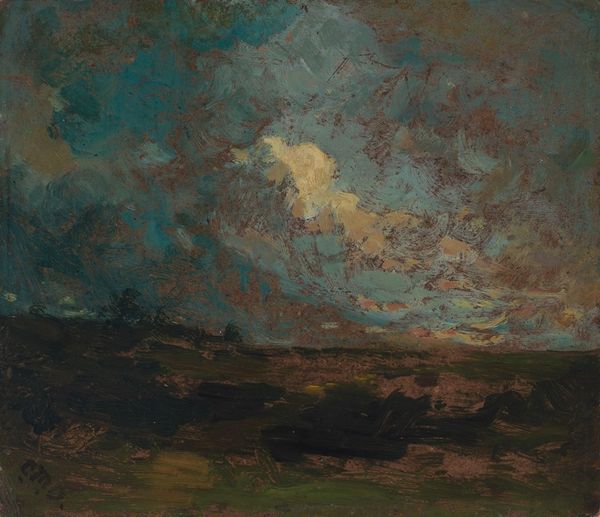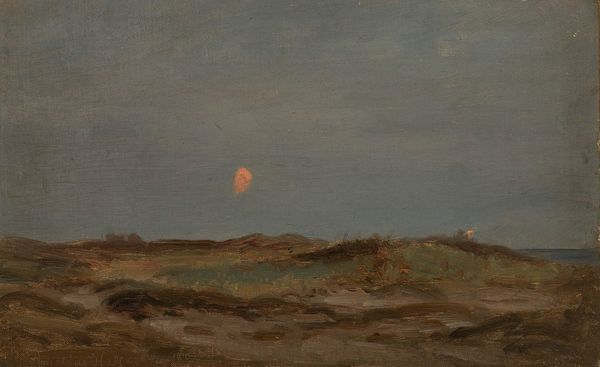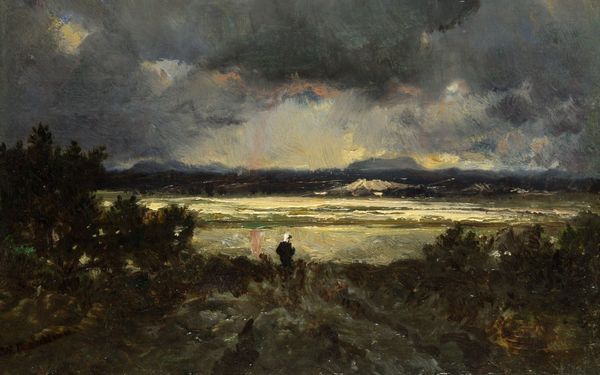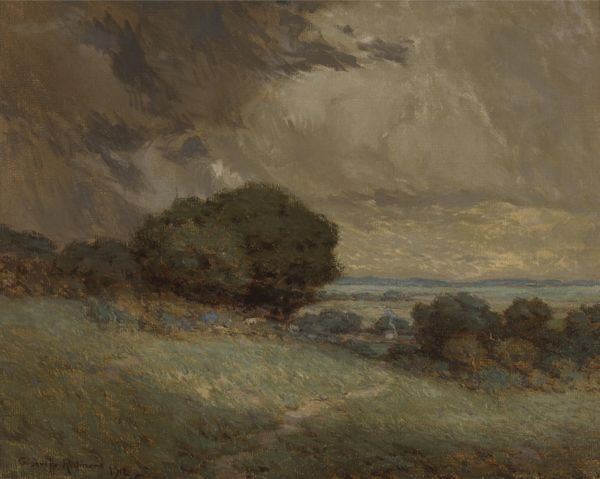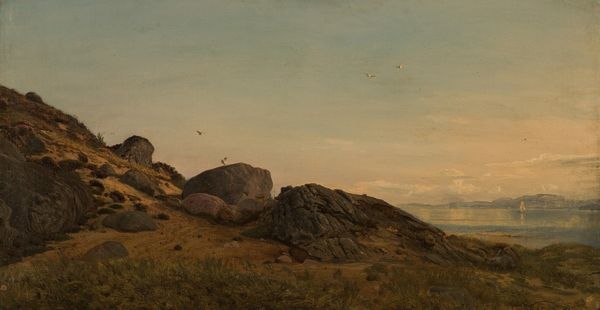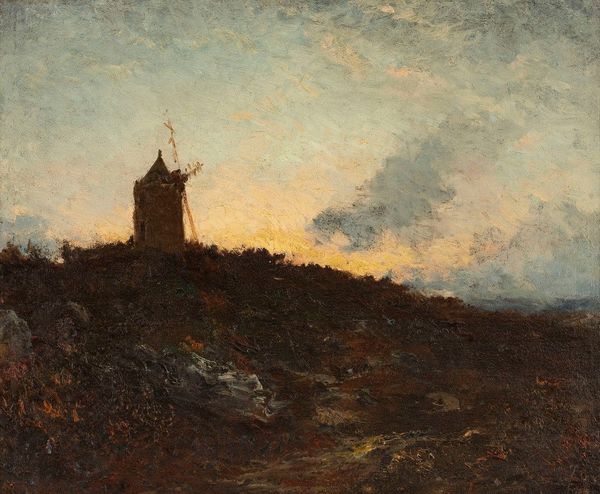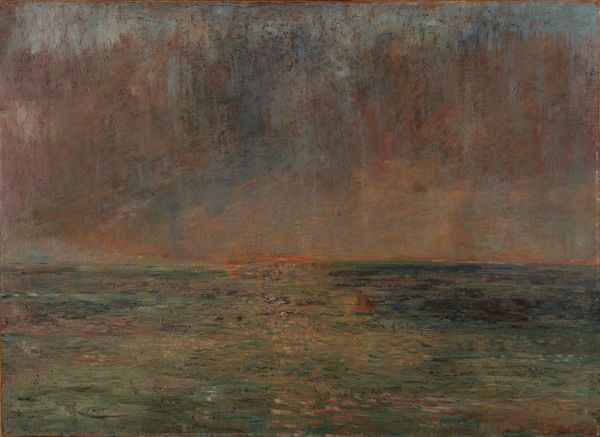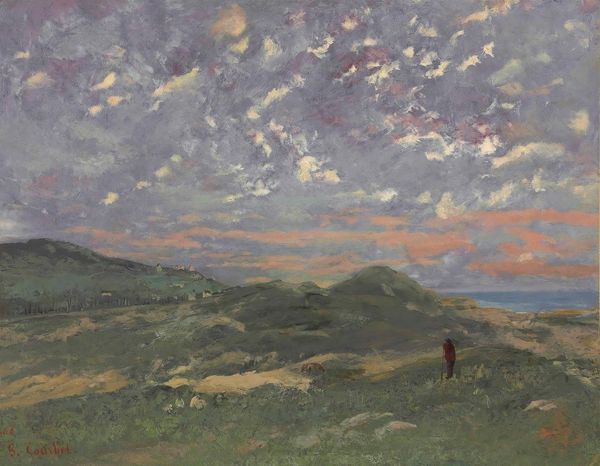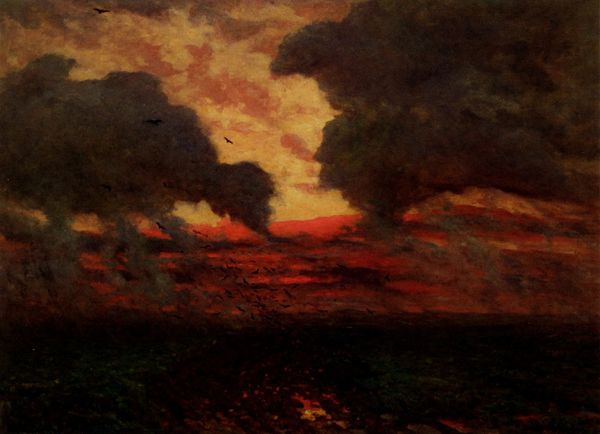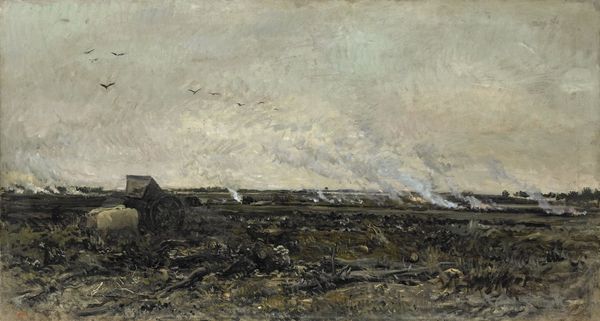
Dimensions: support: 1219 x 1829 mm
Copyright: CC-BY-NC-ND 4.0 DEED, Photo: Tate
Curator: This is James Aumonier's "The Black Mountains," held here at the Tate. Looking at it, I’m struck by how brooding and expansive it feels, almost like a stage set for a tragic drama. Editor: Yes, the sheer scale of the piece—over a meter tall and nearly two meters wide—really emphasizes the vastness of the landscape and the density of the materials used. What kind of labor went into such a large work? Curator: Absolutely. Aumonier, born in 1832, painted landscapes that often addressed the intersection of nature and industry. I see this as a statement on the sublime power of the natural world in contrast to the growing industrialization of the time. Editor: The way the light struggles through the clouds almost seems to symbolize that tension, that struggle between the natural world and the demands placed upon it. What was the source of Aumonier's materials? Curator: It's fascinating how a seemingly simple landscape speaks to broader social and political issues of the era. Editor: It certainly makes you consider the physical act of creating art. Thank you. Curator: Indeed. A powerful piece to contemplate.
